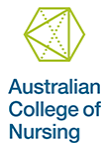Infant and Child Nutrition and Feeding

This unit aims to advance students’ knowledge and skills in infant and child feeding and nutrition and develop nurses who can support the initiation and maintenance of breastfeeding.
The unit explores breastfeeding and lactation, formula feeding, starting solids, and all other aspects of infant and child nutrition. It investigates international, national, and state policies and best practice recommendations for infant and child nutrition and feeding.
Students will build on an undergraduate knowledge of breast anatomy and lactation physiology and apply this to the facilitation of the breastfeeding woman and her family.
The unit will assist students in developing a deeper understanding of the social and cultural complexities of breastfeeding and nutrition and provide insight into the underlying attitudes and values likely to influence feeding and dietary outcomes for the infant, child, and family.
Term : APRIL, OCTOBER
Hours of Study: 150
Credit Points : 6
Theme 1: Establishing lactation
Apply advanced knowledge of the anatomy of the breast, infant oral anatomy, and the physiology of lactation to the care of the breastfeeding woman and her family
Theme 2: Maintaining lactation
Critically reflect the ethics and benefits of breastfeeding and the influences of culture and society on breastfeeding and nutrition
Theme 3: Breastmilk substitutes and infant foods
Appraise networks, services, guidelines, and resources that support the initiation and maintenance of breastfeeding
Theme 4: Dietary and nutritional issues in early childhood
- Critique the evidence-based literature and best practice guidelines for breastfeeding and nutrition to inform clinical practice
- Evaluate a range of infant formula and toddler foods to support parents with the introduction of foods other than breast milk
- Assess the nutritional requirements of infants and children to formulate strategies that promote healthy dietary choices for the whole family
- Anaesthesia Fundamentals | Anatomy | Hazards of Po...
- Posted By eIntegrity Healthcare e-Learning
- Posted Date: 2024-11-25
- Location:Online
- The patient positioned for surgery is vulnerable to extraneous harm. Knowledge of the common injuries and understanding of the causes of harm enables the anaesthetist to minimize the risks.
- Anaesthesia Fundamentals | Anatomy | Bones And Joi...
- Posted By eIntegrity Healthcare e-Learning
- Posted Date: 2024-11-25
- Location:Online
- This session describes the anatomy of the upper and lower limbs, concentrating on the bones and joints. Particular attention is paid to those bones and joints that are of importance to the anaesthetist.
- Anaesthesia Fundamentals | Anatomy | Facial Skelet...
- Posted By eIntegrity Healthcare e-Learning
- Posted Date: 2024-11-25
- Location:Online
- This session describes the bones of the facial skeleton and skull vault. The important muscles that move the mandible are described. The classification and positions of fracture lines commonly seen following trauma to the face and surgical osteotomy are a
- Anaesthesia Fundamentals | Anatomy | Spine Part 2:...
- Posted By eIntegrity Healthcare e-Learning
- Posted Date: 2024-11-25
- Location:Online
- This session covers the anatomy of the sacrum, coccyx and sacral hiatus. It describes the intervertebral discs and spinal ligaments, and the vertebral levels of some of the surface markings of the body. The different types of spina bifida are reviewed.
- Anaesthesia Fundamentals | Anatomy | Spine: Cervic...
- Posted By eIntegrity Healthcare e-Learning
- Posted Date: 2024-11-25
- Location:Online
- The session covers the anatomy of the bones of the vertebral column in the cervical, thoracic and lumbar regions.


